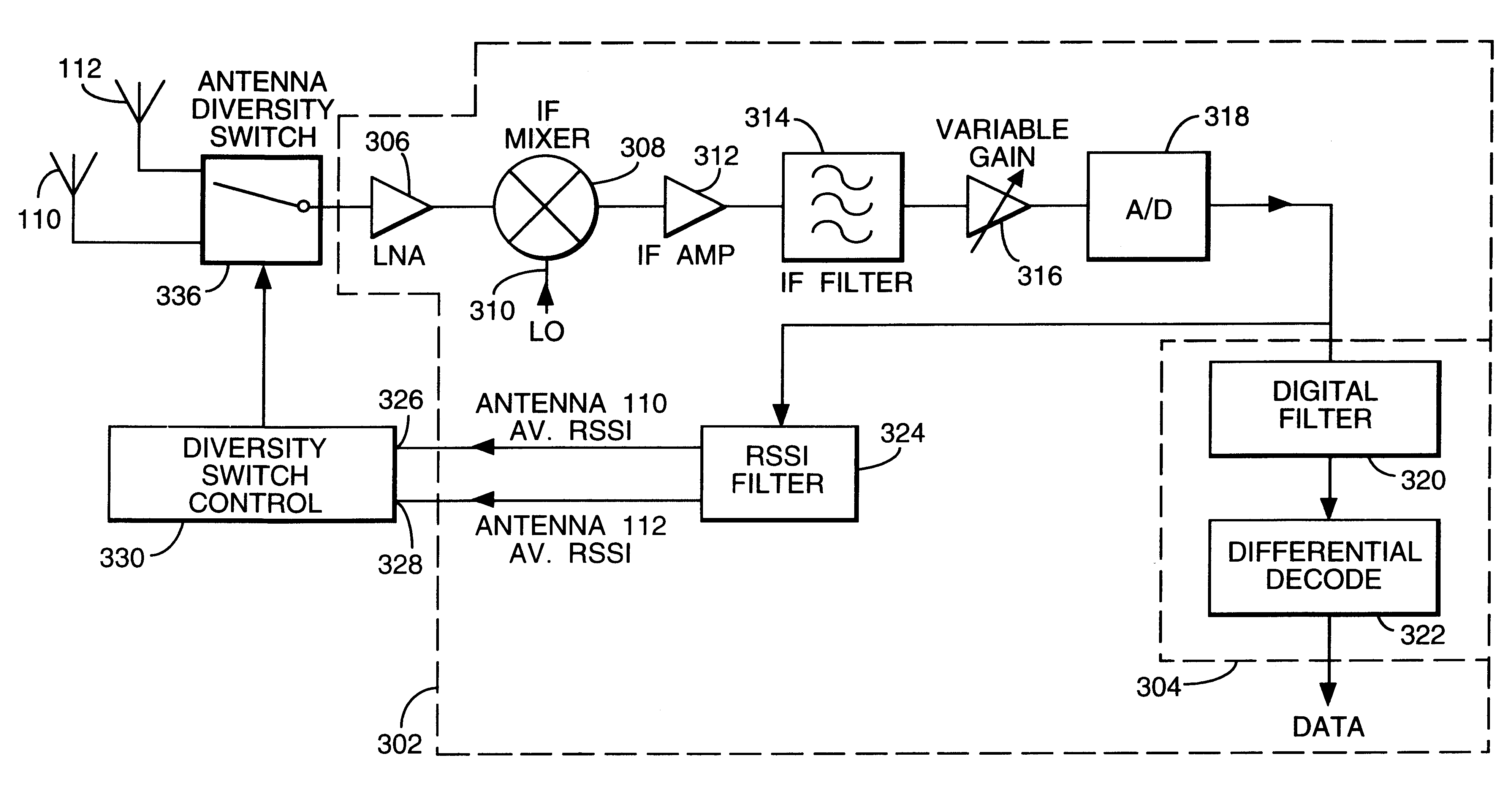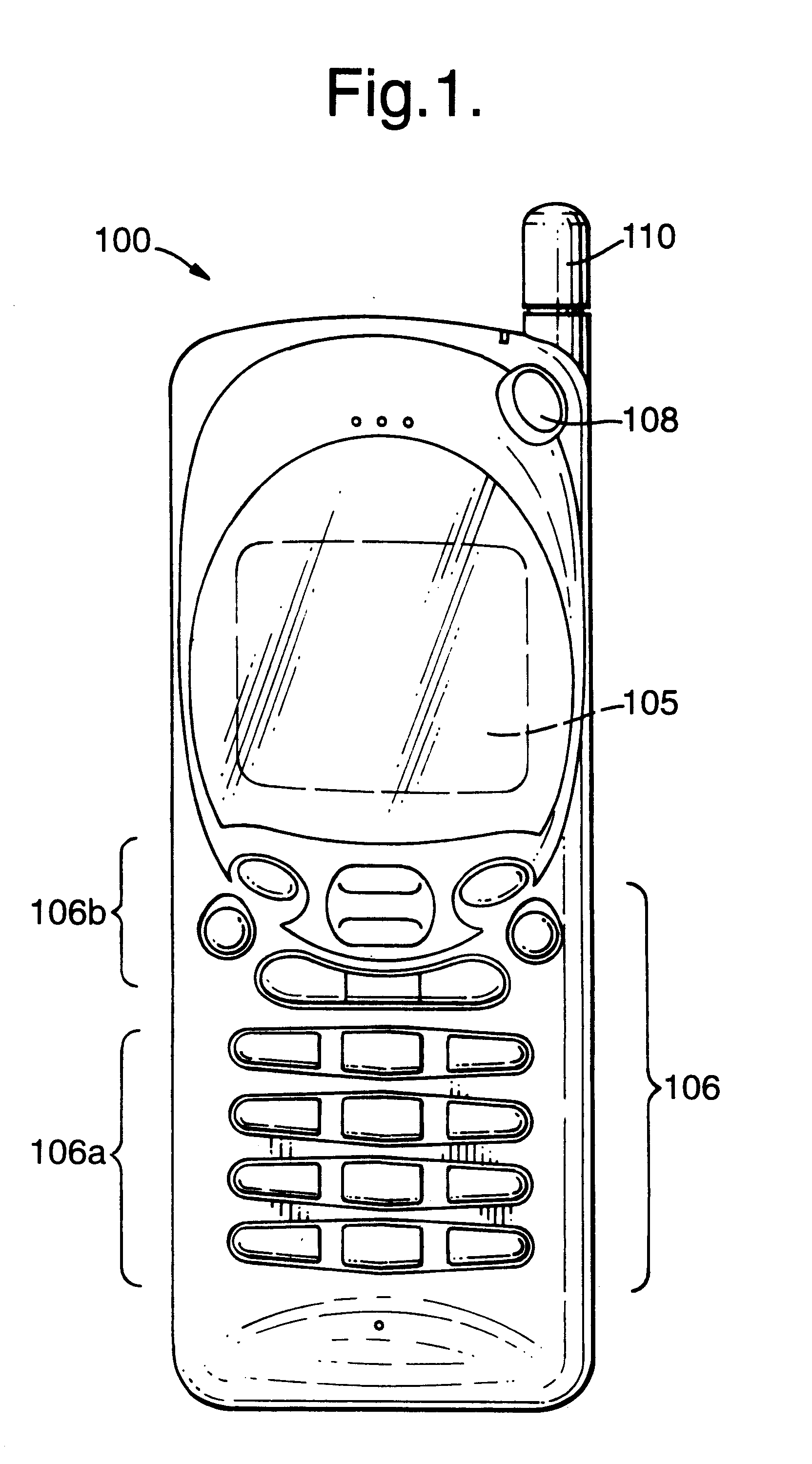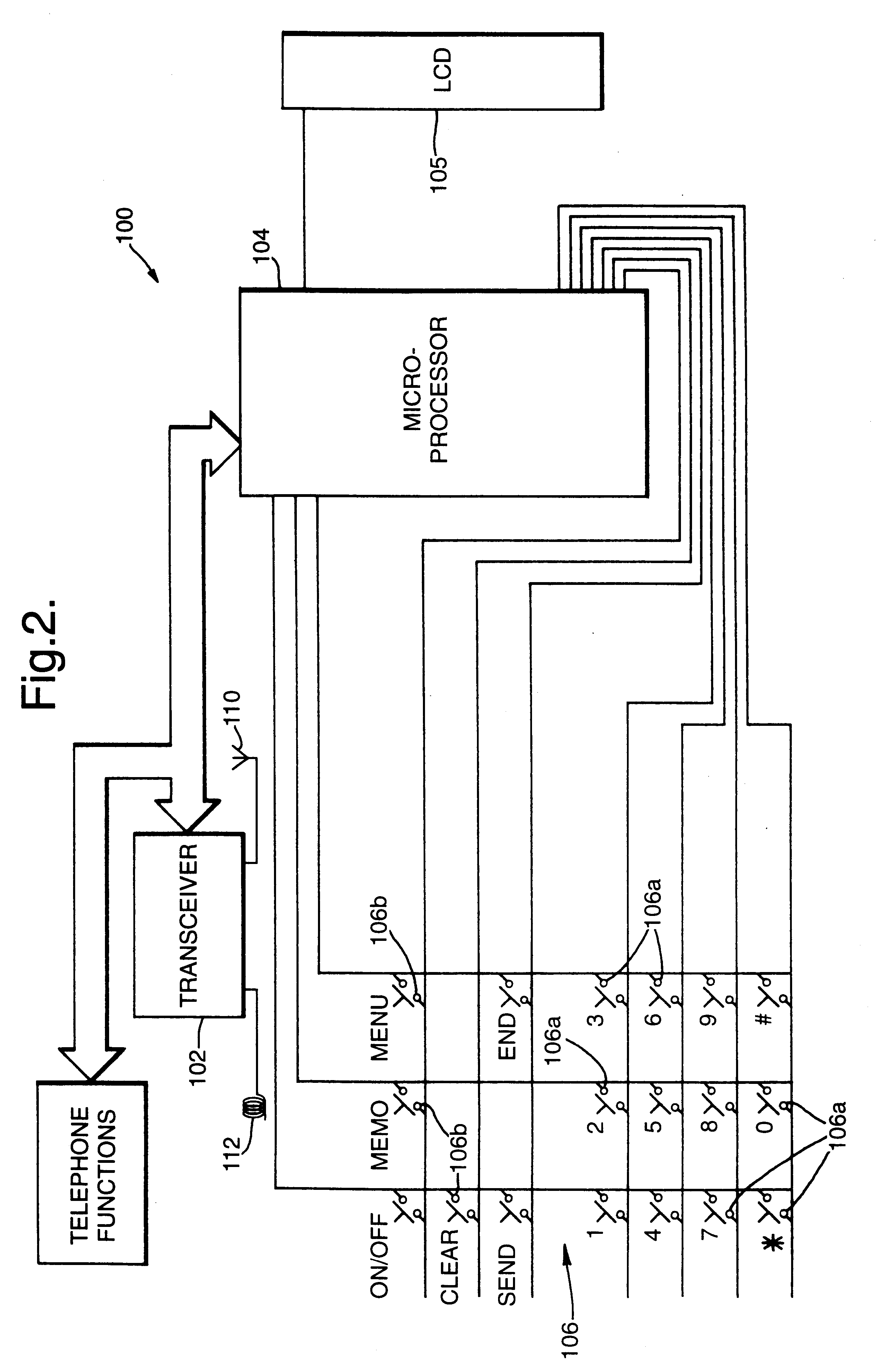Antenna selection control circuitry
a technology of selection control and circuitry, applied in the field of communication systems, can solve the problems of direct line of sight communication, power loss known as path loss, and the quality of communication between a transmitting unit and a receiving unit within the communication system, so as to improve the diversity performance of the antenna for a receiver, avoid clicks and other disturbing interferences in received information, and simple averaging of signals
- Summary
- Abstract
- Description
- Claims
- Application Information
AI Technical Summary
Benefits of technology
Problems solved by technology
Method used
Image
Examples
Embodiment Construction
Embodiments of the invention will now be described, by way of example only, and with reference to the accompanying drawings in which:
The portable radio telephone shown in FIG. 1 is a cellular telephone 100 powered by a rechargeable battery pack. The user-interface of telephone 100 comprises a display, e.g. a liquid crystal display 105, itself well-known in the art and a keypad 106 on the front of the telephone 100. The display is coupled to and regulated by the microprocessor 104 in the usual manner. The keypad 106 essentially comprises two main sets of keys, namely alpha numeric keys 106a associated with alpha numeric data especially for dialling telephone numbers, but also (optionally) for entering alphanumeric data into the telephone memories, e.g. a subscriber number index, and a set of function keys 106b for enabling various predetermined functions or operations. The telephone 100 also includes a power ON / OFF button 108, an external antenna 110, (typically a retractable antenna...
PUM
 Login to View More
Login to View More Abstract
Description
Claims
Application Information
 Login to View More
Login to View More - R&D
- Intellectual Property
- Life Sciences
- Materials
- Tech Scout
- Unparalleled Data Quality
- Higher Quality Content
- 60% Fewer Hallucinations
Browse by: Latest US Patents, China's latest patents, Technical Efficacy Thesaurus, Application Domain, Technology Topic, Popular Technical Reports.
© 2025 PatSnap. All rights reserved.Legal|Privacy policy|Modern Slavery Act Transparency Statement|Sitemap|About US| Contact US: help@patsnap.com



